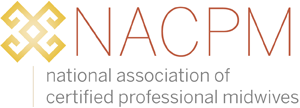For the first time, guidance on hydrotherapy during labor and birth has been created by maternity care experts providing health care professionals and institutions with consensus that had been previously lacking on this topic. A collaboration of the National Association of Certified Professional Midwives (NACPM), American College of Nurse-Midwives (ACNM), the American Association of Birth Centers (AABC), and the Midwives Alliance of North America (MANA) has assembled the guidance template using the most current information and best practices available to outline various roles and responsibilities for caring for women who labor and/or give birth in water. The template is available online now for early review and will be published in the January/February 2017 issue of the Journal of Midwifery & Women’s Health.
This new document has been informed by methodologically-sound, peer-reviewed studies that have been published to date. The template format allows for adapting and tailoring the guidance according to the maternity care team members providing the care, their institutions and their birth settings.
“Together with our partners, we sought to fill a large void on best practice guidance for caring for families who desire hydrotherapy during labor and birth,” said ACNM President Lisa Kane Low, CNM, PhD, FACNM, FAAN. “As maternity care providers, we provide evidence-based practices to those we care for. But unfortunately, the available information and official positions on water birth have varied, which has made access to hydrotherapy difficult for those families who want hydrotherapy to be a part of their maternity care experience. This document offers guidance for maternity care professionals to aid them in making sound decisions and giving recommendations to those who want to labor, or labor and give birth, in water.”
“Hydrotherapy has been well integrated into interprofessional maternity care in the United Kingdom since the 1980s with written evidence-based guidelines. Our template offers best practice principles and a standardized approach to providing safe intrapartum immersion for women seeking immersion in the United States,” said Elizabeth Nutter CNM, DNP, co-editor of the guidelines. “Water labor and water birth promote physiologic birth while providing highly effective pain management. Intrapartum immersion empowers the mother to give birth free from unnecessary intervention.”
Lesley Rathbun, MSN, FNP, CNM, President of AABC, said, “Our research supports the safety of water birth as an effective method of labor pain management when used by skilled, anticipatory providers using appropriate criteria. Many AABC birth centers offer water labor and birth, and we are proud to have participated in this document that will improve access and birth choices for mothers in the US.”
Colleen Donovan-Batson, MS, CNM, ARNP, Director of Health Policy & Advocacy, MANA, said, “The largest ever research on water birth found that, for low-risk mothers whose labors proceed normally, water immersion is generally a safe pain management option. That’s why Midwives Alliance wanted to make sure this best practice guidance is available to care providers.”
“Immersion in water for labor and birth supports healthy and normal physiologic childbirth, and people giving birth want it as an option,” said Mary Lawlor, CPM, LM, MA and Executive Director of NACPM. “These guidelines provide critical evidence-based information that will support choice for childbearing people and sound clinical practice in all birth settings.”

